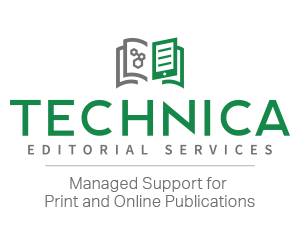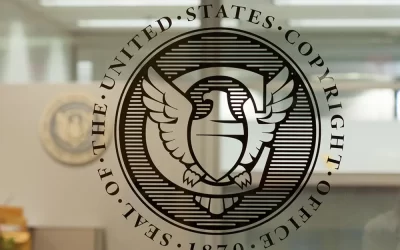February 11, 2024 marks the ninth annual U.N. General Assembly’s International Day of Women and Girls in Science. Now, more than ever, girls’ horizons are expanding, allowing them to make their marks in fields in which they have historically been underrepresented. Since its inception in 2016 as the result of a resolution adopted by the U.S. General Assembly, the International Day of Women and Girls in Science has grown and is now sponsored by more than 65 countries. (Source: International Day of Women and Girls in Science Official Website [womeninscienceday.org]).

In recent years, many of the top contributions to the most pertinent areas of the sciences have been made by women. Take, for instance, climate change, which has a daily effect on every human being. The most recent Intergovernmental Panel on Climate Change, hosted by the United Nations, showcased how women in the science and engineering realms are tackling this critical topic. Kathryn Bowen, for example, provided insights into the health impacts associated with gas emissions and global warming. Rawshan Ara Begum explored the financial consequences of climate change, particularly in developing nations. (Source: Women Scientists on the Forefront of Climate Action | United Nations).
We are not yet where we should be. Although women have made some progress, there is a noticeable lack of gender diversity on editorial boards, and there are concerns that female authors in the sciences may be discouraged by the absence of women as editors. (Source: Is There Gender Equity in Science Editing? – Science Editor [csescienceeditor.org]).
Experts admit that creating gender equity in the sciences and engineering is a process that is far from over. For example, one study looked at more than 10,000 journals and found that only 14 percent of editors were women—and for editors-in-chief (EICs), the figure was even lower, at just 8 percent. Another study looked specifically at dermatology journals and concluded that less than 19 percent of them had a current female EIC. Perhaps even more staggering were the statistics surrounding past EICs: nearly half had never seen a woman in the EIC position. Editors are only one part of the picture, of course, but we know that representation matters, and representation at the editorial level signals a commitment to inclusion.
Women are making dramatic strides in the sciences. Carolyn Bertozzi, EIC for ACS Central Science, a journal published by the American Chemical Society, was awarded a Nobel Prize in Chemistry in 2022 for her work in the development of the cell exploration process. Other recent notable female Nobel laureates include Anne L’Huillier, who received the honor in 2023 for her work on electron dynamics in matter, and Jennifer Doudna, whose work on genome editing earned her the Prize in 2020. (Sources: https://www.nobelprize.org/prizes/chemistry/2022/bertozzi/facts/; https://news.stanford.edu/2022/10/05/carolyn-bertozzi-wins-nobel-chemistry/; https://www.nobelprize.org/prizes/physics/2023/lhuillier/facts/; https://en.wikipedia.org/wiki/Jennifer_Doudna).
Many recent female Nobel Prize winners have also been honored for their work in closing the gender gap. In 2023, Claudia Goldin was awarded the Economics Prize for her research into women’s progress in the workforce. Narges Mohammadi was honored with the Peace Prize in 2023 for her efforts to fight against the oppression of women—a passion that has led to several sentences in an Iranian prison. (Sources: https://www.nobelprize.org/prizes/peace/2023/mohammadi/facts/, https://www.latimes.com/world-nation/story/2024-01-15/iran-sentences-imprisoned-nobel-peace-prize-laureate-narges-mohammadi-to-more-prison-time).
Studies have shown that gender equity in scientific disciplines is not only a societal issue, it also matters when it comes to personal health. In medicine, for example, a doctor’s office or hospital with a gender-diverse staff might lead to better patient outcomes. In addition, gender-diverse workplaces, including—but not limited to—those in the science, technology, engineering, and mathematics (STEM) fields, tend to promote increased productivity and better employee satisfaction among teams, which in turn lead to higher rates of employee retention and more robust companies. Experts also note that in traditionally male-dominated fields, female role models are particularly critical; this underscores the importance of these female Nobel laureates and their influence not only in their fields, but also as mentors.
The International Day of Women and Girls in Science is also crucial in promoting the STEM arena as one with careers that directly help the world; based on a recent study by Microsoft, less than half of girls (37 percent) feel that STEM careers can do this. (Source: INTERNATIONAL DAY OF WOMEN AND GIRLS IN SCIENCE – February 11, 2024 – National Today). Yet the United Nations, in publicizing the International Day of Women and Girls in Science, is also striving to publicize the major global effects that women and girls in science have the power to create, from maintaining cleaner drinking water to combatting greenhouse gas emissions. (Source: International Day of Women and Girls in Science | United Nations).
Closing the gender gap for women and girls in STEM will not happen overnight—and while great progress has been made over the last decade, far more work remains to be done. But every single attempt to make more progress, whether successful or not—every female editor who applies for an EIC position, or every female professor who sets the goal of one day winning a Nobel Prize—creates a positive example and a step in the right direction.
By: Anne Brenner
Anne is an Assistant Managing Editor at Technica Editorial




